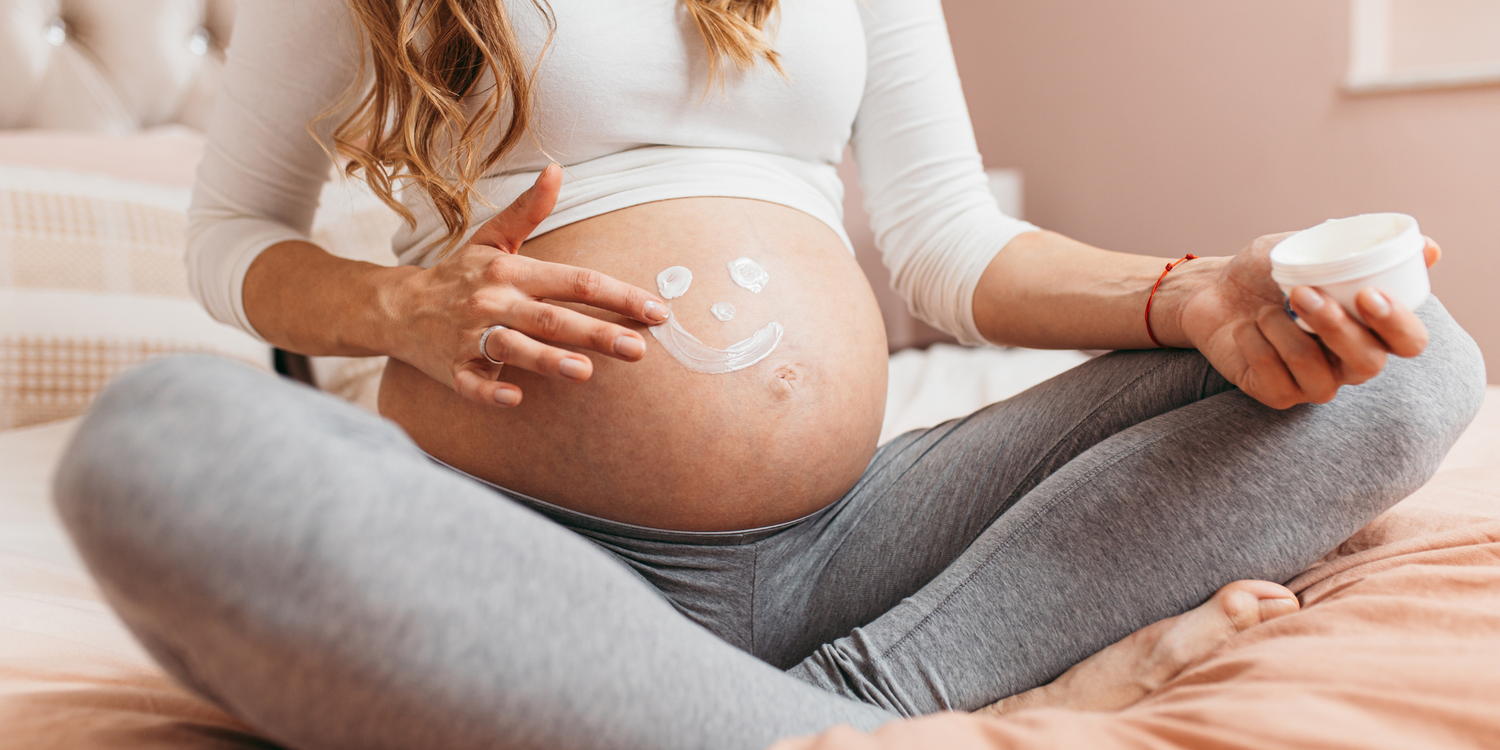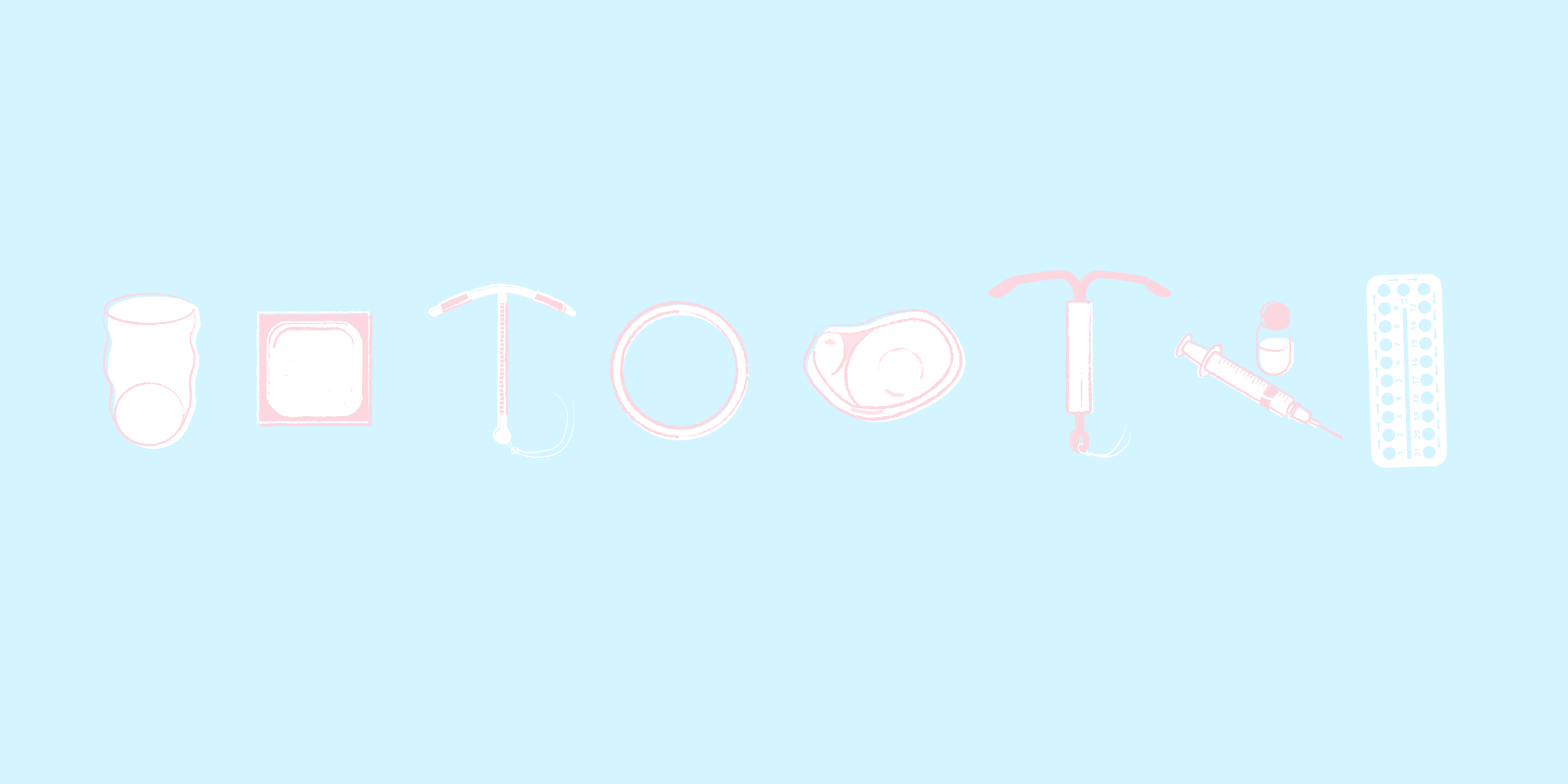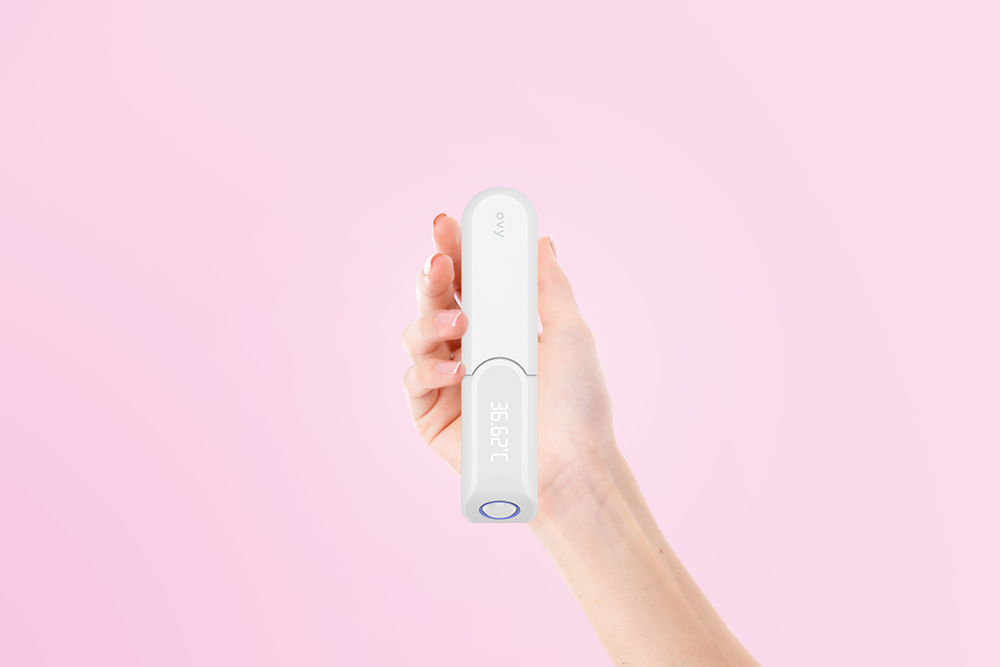Key Takeaways
- Would you like to prevent stretch marks during pregnancy?
- In this article, you will find out how you can reduce the risk of stretch marks with targeted skin care, a nutritious diet and gentle massages.
- The combination of natural oils such as almond and jojoba oil, a balanced diet and a daily skincare routine will support your skin optimally and help you to look forward to this special journey to motherhood.
Are you worried about stretch marks during your pregnancy? These common skin changes affect up to 90% of pregnant women*. Your skin undergoes significant changes during pregnancy, but you can actively help prevent stretch marks and strengthen your connective tissue.
In this article, you will learn how to reduce the risk of stretch marks with targeted skin care, a balanced diet and regular massage. You will get practical tips on how to use nourishing oils, learn about important nutrients such as vitamin C and vitamin A, and discover the role that your genetic predisposition plays in the development of stretch marks.
What are stretch marks and how do they develop?
During your pregnancy, your body undergoes fascinating changes. One of these is stretch marks, which occur in about 75 to 90% of all pregnant women.
Definition of stretch marks
Stretch marks, medically known as striae gravidarum, are scar-like skin changes that appear as pink, red, purple or brown stripes. They develop when the connective tissue in the dermis, which is responsible for elasticity, is overstretched. This causes fine cracks in the lower layer of skin, which get their characteristic color from blood vessels that can be seen through them.
Causes
There are a few factors that contribute to the development of stretch marks:
- Hormonal changes: During pregnancy, your cortisol levels rise, which can reduce the elasticity of your skin.
- Genetic predisposition: If your mother or sister developed stretch marks during pregnancy, you are more likely to suffer from them as well.
- Skin type and age: Women* with fair, sensitive skin and younger mothers are particularly susceptible.
Most stretch marks appear towards the end of the second trimester, when your belly is growing the most. During this phase, your skin stretches particularly quickly to make room for your growing baby, uterus and placenta.
Typical affected body parts
Stretch marks can appear on various parts of your body that are subject to significant stretching during pregnancy:
- Belly: The most commonly affected area, especially in the lower part
- Breasts: Due to the preparation for breastfeeding
- Hips and buttocks: Due to weight gain
- Thighs: Due to the additional strain
- Upper arms: Visible here in some cases as well
It is important to understand that stretch marks are a completely natural process and are not a sign of poor care. Rather, they are a sign of your body's remarkable ability to adapt during pregnancy.
Effective prevention of stretch marks
Ideally, the right way to prevent stretch marks is to start on the first day of your pregnancy. With a targeted combination of care, nutrition and exercise, you can give your skin the best possible support.
Regular skin care and massage
A daily skincare routine is the key to preventing stretch marks. It's best to start with regular massages of your stomach, breasts and hips at the beginning of your pregnancy. Ideally, you should massage twice a day, but about a month before the due date, you should massage very gently.
For an effective massage, you can follow these steps:
- Apply a pregnancy care oil or a special cream
- Massage in circular motions from the base of the breast to the center of the breast
- Treat the abdominal area with gentle stroking movements
- Don't forget to include the hips, buttocks and thighs
Balanced nutrition and sufficient fluids
An optimal diet is crucial for the elasticity of your skin. Important nutrients for strong connective tissue are:
- Omega-3 fatty acids: found in oily fish, flaxseed and walnuts
- Antioxidants: found in berries, citrus fruits and tomatoes
- Zinc: found in beef, legumes and whole grain products
- Amino acids: found in meat, fish, eggs and dairy products
Drink at least two to three liters of water or unsweetened tea a day. Adequate fluid intake is essential to keep your skin moisturized from the inside and maintain its elasticity.
Gentle exercise and sports during pregnancy
Regular exercise not only strengthens your connective tissue, but also supports healthy weight management. Particularly recommended are:
Gentle pregnancy gymnastics: This special form of movement is optimally tailored to the needs of your pregnant body.
Relaxing yoga: Yin yoga is particularly suitable for toning and relaxing your connective tissue at the same time.
Make sure that all your sporting activities feel comfortable and, if in doubt, talk to your midwife or gynecologist about suitable forms of exercise.
The best products for prevention
Choosing the right care products plays a central role in preventing stretch marks. Let's explore which products can best help you.
Nourishing oils and creams
Scientific studies show that regular use of care products in combination with massage can improve skin suppleness. The following have proven particularly effective:
- Almond oil: provides intensive moisture and is quickly absorbed
- Jojoba oil: has an antioxidant effect and is also suitable for atopic dermatitis
- Wheat germ oil: protects skin cells from free radicals
- Argan oil: rich in antioxidants and moisturizing
- Evening primrose oil: prevents moisture loss and relieves inflammation
Natural ingredients and their effects
The effectiveness of your care products depends largely on their ingredients. The following are particularly effective:
Vitamin E: Helps to regenerate the skin and stimulates renewal of the skin layer.
Aloe vera: Provides the skin with moisture and helps to heal minor injuries.
Vegetable oils: Have a skin-caring effect and increase the elasticity and stability of the skin. They contain skin-like lipids and integrate naturally into the skin barrier.
Grapefruit oil: Stimulates the skin's metabolism and regeneration.
Tips for optimal results
For the best possible effect of your care products, you should follow these steps:
- Timing of application: Ideally, apply the products twice a day
- Preparation: First warm the oil or cream in your hands
- Massage technique: Use circular movements until you feel a slight warmth
- Intensity: Massage gently but with a certain amount of energy, but only as hard as is comfortable.
Please note: The effects of skincare products are best seen in combination with a balanced diet and adequate hydration. Creams or moisturizing lotions specially formulated for stretch marks not only moisturize but also strengthen the skin barrier.
An important note: While prescription-strength retinoids can have a positive effect on striae, you should avoid products containing vitamin A during pregnancy, as they could harm the unborn child.
Conclusion
Your skin during pregnancy deserves special attention and care. With the right combination of regular massage, high-quality care products and a balanced diet, you can significantly reduce the risk of stretch marks. Your daily care routine with nourishing oils and creams forms the foundation for healthy, elastic skin. Using natural ingredients such as almond oil or aloe vera also helps your skin adapt to the changes.
Remember that everyone's body is unique and will react differently to skincare routines. Consistent skincare, along with staying well-hydrated and gentle exercise, will give you the best chance of preventing stretch marks. You can take pride in actively caring for your skin, but don't put too much pressure on yourself, as stretch marks are a natural part of your journey to motherhood.
References & Literature
- American College of Obstetricians and Gynecologists (Hrsg.): Your Pregnancy and Childbirth. Month to Month. Sixth Edition Paperback. 2016.
- Harder, Ulrike: Wochenbettbetreuung in der Klinik und zu Hause. Thieme. Stuttgart. 2014.
- Höfer, Silvia; Szász, Nora: Hilfe bei Schwangerschaftsbeschwerden. Gräfe & Unzer. München. 2016.
- Laue, Birgit: Schwangerschaft. Gesunde Entwicklung, Vorsorge, Geburt. 3. Auflage. Gräfe und Unzer. München. 2015.
- Raulin, Christian; Karsai, Syrus (Hrsg.): Lasertherapie der Haut. Springer. Berlin, Heidelberg. 2013.
- Wick, Myra J. M.D., Ph.D.: Guide to a Healthy Pregnancy. Second Edition Paperback. Mayo Clinic. 2018.
You might also be interested in these articles
Schwangerschaft
Thyroid Levels and Pregnancy: Essential Information for Expectant Mothers6 Min. Lesezeit





